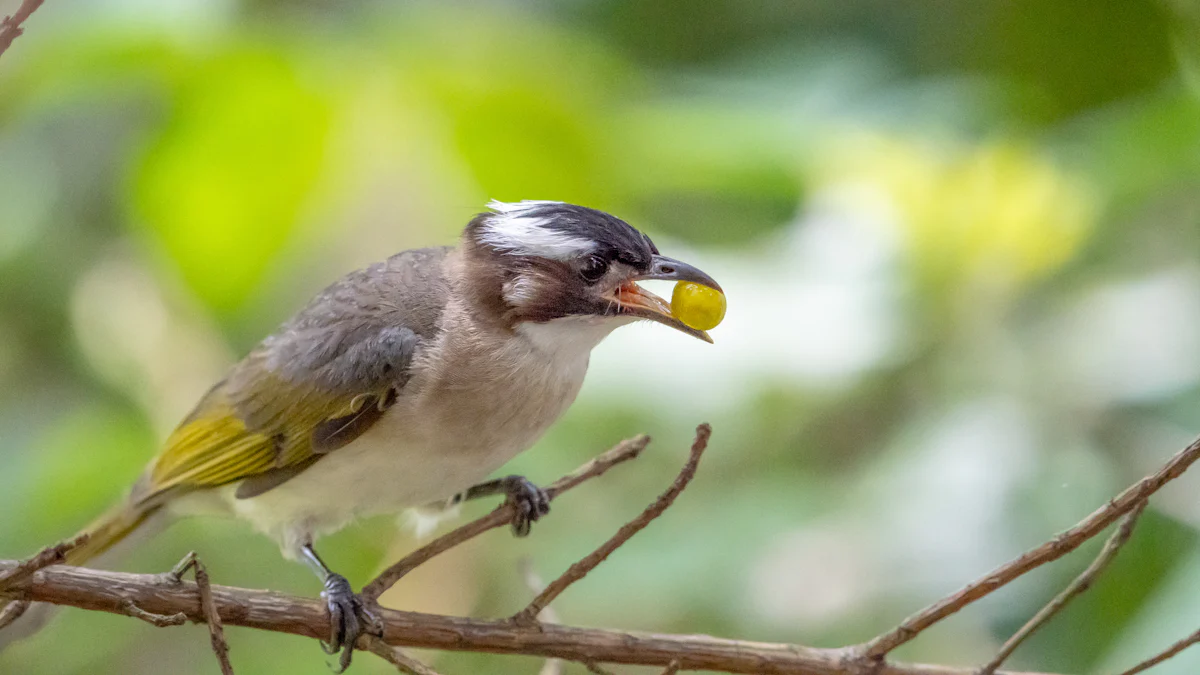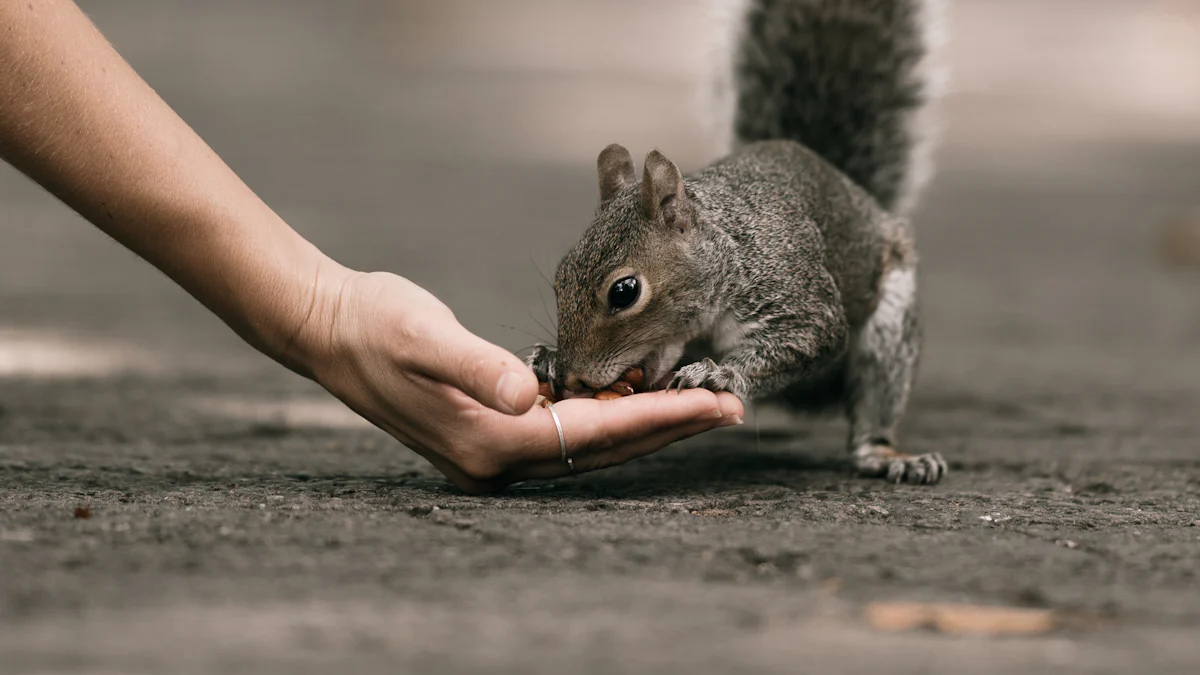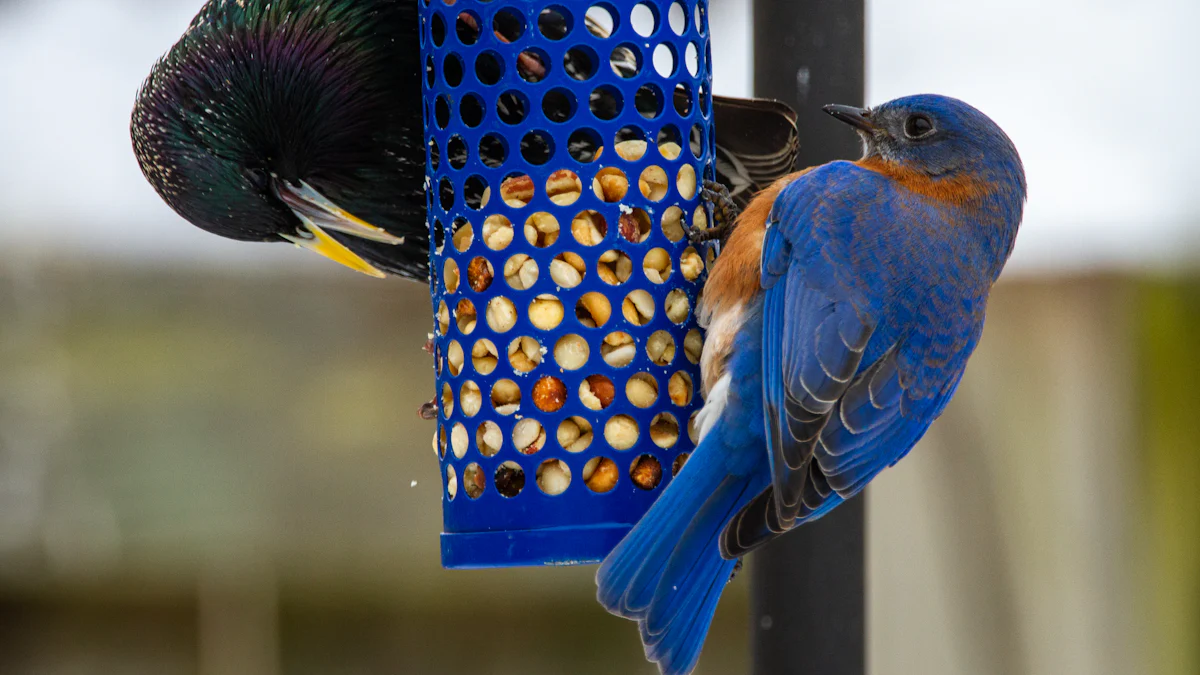
Have you ever wondered why Dried Mealworms Birds seem to love flocking to your yard when you put them out? I’ve noticed that these little treats are like a magnet for so many bird species. Dried Mealworms Birds are packed with protein, fiber, and fat, providing the energy birds need, especially during nesting or migration. Plus, they’re incredibly convenient. Unlike live mealworms, dried ones have a long shelf life, so I can keep feeding birds even in the winter when food is scarce. Birds like robins, bluebirds, and wrens seem to enjoy them the most, but I’ve seen other species join in too. It’s amazing how something as simple as Dried Mealworms Birds can attract such a variety of wildlife to your yard!
Key Takeaways
- Dried mealworms are a nutritious treat for birds, packed with protein, fiber, and fat, making them ideal for energy during nesting and migration.
- Offering dried mealworms can attract a diverse range of bird species, including robins, bluebirds, and wrens, enhancing your backyard’s biodiversity.
- Using specialized feeders or scattering mealworms on the ground mimics natural foraging behavior, making it easier for birds to find and enjoy them.
- Regularly providing dried mealworms, especially during peak feeding times, encourages birds to visit consistently, turning your yard into a lively birdwatching spot.
- Soaking dried mealworms in water can make them more appealing to birds, helping to introduce them to this nutritious food source.
Common Dried Mealworms Birds

When I started offering dried mealworms in my yard, I was amazed at the variety of birds that showed up. Let me share some of the most common ones I’ve seen enjoying these treats.
Songbirds
Robins
Robins are some of the first birds I noticed eating dried mealworms. They love foraging on the ground, so I usually scatter mealworms in open areas. Watching them hop around and pick up the worms is such a delight!
Bluebirds
Bluebirds are another favorite. These vibrant birds seem to have a special fondness for mealworms. I’ve found that placing the worms in a platform feeder works best for them. It’s like they know a feast is waiting just for them.
Wrens
Wrens are tiny but mighty when it comes to mealworms. They dart in and out of the feeders, grabbing a worm and flying off quickly. Their energy is contagious, and I love seeing them in action.
Small Birds
Small birds are particularly drawn to dried mealworms because of their high protein and fat content. Here’s a quick comparison of the nutritional benefits of dried versus live mealworms:
| Nutritional Component | Live Mealworms | Dried Mealworms |
|---|---|---|
| Moisture | 62% | 5% |
| Lipid (Fat) | 13% | 28% |
| Protein | 20% | 53% |
| Ash | 1.5% | 4.1% |
| Carbohydrate | 3.1% | 8.5% |
Chickadees
Chickadees are bold little birds that don’t hesitate to grab a mealworm. They’re quick and efficient, often taking the worm to a nearby branch to enjoy it in peace.
Titmice
Titmice are regular visitors to my yard. They seem to appreciate the high-fat content of dried mealworms, especially during colder months when they need extra energy.
Nuthatches
Nuthatches are fascinating to watch. They often cling upside down on tree trunks, but they’ll happily come to feeders for mealworms. Their unique behavior makes them a joy to observe.
Other Birds
Sparrows
Sparrows are ground feeders, so I usually sprinkle mealworms on the ground for them. They’re not picky and will eagerly join the feast.
Woodpeckers
Woodpeckers might surprise you, but they love dried mealworms too. I’ve seen them visit my feeders regularly, especially during nesting season.
Starlings
Starlings are opportunistic eaters. They’ll swoop in and grab mealworms whenever they get the chance. While they can be a bit aggressive, it’s still fun to see them interact with other birds.
Offering dried mealworms has truly transformed my yard into a lively bird haven. It’s incredible how these little treats can attract such a diverse group of birds. If you haven’t tried it yet, I highly recommend giving it a shot!
Benefits of Feeding Dried Mealworms to Birds
Nutritional Advantages
High-protein content supports energy and growth.
I’ve always been amazed by how much nutrition is packed into dried mealworms. They’re like tiny powerhouses for birds! With up to 53% protein, they provide the energy birds need to stay active and healthy. Here’s a quick breakdown of their nutritional value:
| Nutrient | Value |
|---|---|
| Crude Protein | 52.8% |
| Crude Fat | 24.7% |
| AD Fiber | 9.0% |
| Calcium | 0.05% |
| Phosphorus | 1.03% |
| Sodium | 0.097% |
| Manganese (ppm) | 23 |
| Zinc (ppm) | 144 |
This high protein content supports muscle development and energy, which is especially important during nesting and molting seasons. Birds rely on these nutrients to grow strong feathers and care for their young. I’ve noticed that when I offer dried mealworms, the birds in my yard seem more vibrant and active.
Ideal for nesting and molting seasons.
During nesting and molting, birds need extra nutrition. Dried mealworms are rich in calcium, iron, and vitamin B12, which help with feather growth and muscle strength. I’ve seen bluebirds and wrens flock to my feeders during these times, and it’s clear they benefit from the extra boost.
Practicality
Easy to store and handle compared to live mealworms.
One of the best things about dried mealworms is how easy they are to handle. Unlike live mealworms, I don’t have to worry about keeping them alive. I just store them in a cool, dry place, and they stay fresh for months. Their resealable packaging makes it super convenient to use them whenever I need to.
Long shelf life for year-round use.
A poultry specialist once shared, “Dried mealworms are a great way to introduce your chickens to insects and provide them with more protein than they currently get in their feed.”
This long shelf life means I can stock up and feed birds all year round, even in winter when food is scarce. It’s a relief not having to constantly restock or worry about spoilage.
Attracting Diverse Bird Species
Appeals to insect-eating birds not drawn to seeds.
Some birds, like bluebirds and wrens, aren’t interested in seeds. Dried mealworms are perfect for attracting these insect-eating species. I’ve also seen chickadees, nuthatches, and even kinglets enjoy them. It’s fascinating to watch such a variety of birds visit my yard.
Encourages biodiversity in your yard.
Feeding dried mealworms has transformed my yard into a mini ecosystem. They attract different bird species, which helps control insects naturally. This creates a balanced environment where birds thrive, and I get to enjoy their beauty and songs every day.
How to Offer Dried Mealworms in Your Yard

Using Feeders
Specialized mealworm feeders for easy access
I’ve found that specialized mealworm feeders make offering dried mealworms so much easier. These feeders are designed to hold mealworms securely, whether I place them in the feeder or scatter them on the ground. They keep the area clean by minimizing mess and waste. I don’t have to worry about attracting pests or dealing with residue. Plus, these feeders are versatile, so birds of all sizes can enjoy the mealworms without any trouble. It’s a win-win for me and the birds!
Platform or tray feeders for visibility
Platform or tray feeders are another great option. They provide a flat surface, which makes the mealworms more visible to birds. I’ve noticed that when the worms are easy to spot, more birds visit my yard. The design also ensures that the mealworms don’t get hidden or stuck, so birds can grab them effortlessly. If you’re just starting out, I’d recommend trying a tray feeder—it’s simple and effective.
Spreading on the Ground
Mimics natural foraging behavior
Some birds prefer to forage on the ground, and spreading dried mealworms there works perfectly. It mimics their natural feeding habits, making them feel right at home. I love watching them hop around, searching for the worms—it’s like a little treasure hunt for them.
Ideal for ground-feeding birds like robins and sparrows
Ground-feeding birds like robins and sparrows seem to enjoy this method the most. But I’ve also seen bluebirds, chickadees, and even wrens join in. It’s amazing how many species are drawn to mealworms when they’re scattered on the ground.
Mixing with Other Foods
Combine with seeds or suet to attract more birds
Sometimes, I mix dried mealworms with seeds or suet. This combination attracts a wider variety of birds. It’s especially helpful for birds that aren’t familiar with mealworms yet. They’ll come for the seeds and discover the mealworms as a bonus.
Helps birds unfamiliar with mealworms discover them
As one bird enthusiast shared, “We obtain both dried and live mealworms. Occasionally we add live ones to a dish along with the oatmeal they are packaged with. The birds hunt for the worms underneath the oatmeal.” This trick works wonders for introducing mealworms to new visitors in my yard.
Offering dried mealworms in different ways has made my yard a favorite spot for birds. Whether I use feeders, spread them on the ground, or mix them with other foods, the results are always rewarding. Watching the birds enjoy these treats never gets old!
Tips for Attracting Birds to Dried Mealworms
Choose the Right Location
Finding the perfect spot for your feeders can make all the difference. I’ve learned that birds feel safer when feeders are in quiet, sheltered areas. Here’s what I consider when choosing a location:
- Visibility and Accessibility: I place feeders where I can watch the birds without scaring them off. It’s fun to observe their behavior while they enjoy the mealworms.
- Protection from Predators: To keep birds safe, I make sure feeders are at least 10 feet away from trees or structures where predators might hide.
- Shelter from the Elements: Feeders near shrubs or trees provide cover from wind, rain, and sun. Birds like finches and chickadees seem to prefer these spots since they offer a quick escape route if needed.
This setup has made my yard a welcoming and secure place for birds to feed.
Provide Fresh Water
Adding a water source near the feeders has been a game-changer. Birds love having fresh water to drink or bathe in. A simple birdbath works wonders. I’ve noticed that when water is available, more birds visit my yard. It’s like creating a little oasis for them. Plus, watching them splash around is always entertaining!
Timing and Consistency
Timing is everything when it comes to feeding birds. I’ve found that offering dried mealworms in the early morning or late afternoon works best. These are the times when birds are most active and searching for food. During the breeding season, this becomes even more important. Parent birds need extra protein to feed their chicks, and mealworms are the perfect solution.
I also increase feeding during nesting and migration seasons. Natural food sources can be scarce during these times, especially after storms or droughts. By providing mealworms, I help birds maintain their energy levels when they need it most. It’s rewarding to know I’m making a difference in their lives.
Be Patient
Birds may take time to recognize mealworms as food.
When I first started offering dried mealworms, I noticed that some birds didn’t seem interested right away. It’s completely normal! Birds might not recognize mealworms as food at first, especially if they’re used to seeds or other treats. I’ve learned a few tricks to help them figure it out.
- I began by offering live mealworms. Birds are naturally drawn to movement, so live mealworms caught their attention quickly. Once they got used to the idea, switching to dried mealworms became much easier.
- Another method that worked for me was soaking dried mealworms in lukewarm water. This made them softer and more similar to live ones. The added moisture also seemed to enhance their smell, making them more appealing to the birds.
It’s all about making mealworms as enticing as possible. If you’re patient and try these methods, you’ll see birds start to recognize and enjoy them. Watching that moment when they finally “get it” is so rewarding!
Regularly offering mealworms encourages visits.
Consistency is key when it comes to attracting birds. I’ve found that regularly putting out dried mealworms creates a reliable food source that birds can count on. This is especially important during times when natural food is scarce, like in winter or after a storm.
- Birds quickly learn where to find food, and they’ll return to your yard if they know mealworms are always available.
- Dried mealworms are not only nutritious but also convenient to offer. Their long shelf life means I can keep feeding birds without worrying about spoilage.
Timing also plays a big role. I make sure to put out mealworms during the early morning or late afternoon when birds are most active. Over time, I’ve noticed more consistent visits from a variety of species. It’s amazing how something as simple as regular feeding can turn your yard into a bustling bird haven.
🐦 Tip: Don’t get discouraged if birds don’t show up right away. Keep offering mealworms, and soon enough, your yard will become their favorite spot!
Dried mealworms have completely transformed my backyard into a lively birdwatching paradise. They’re packed with protein and nutrients, making them a healthy treat for birds like bluebirds, robins, and wrens. Offering mealworms has also brought more biodiversity to my yard, which is amazing to see every day.
Here’s why I think they’re a game-changer:
- 🐦 Versatile Feeding Options: Whether I use platform feeders, scatter them on the ground, or mix them with seeds, mealworms cater to all kinds of birds.
- 🌱 Supports a Balanced Ecosystem: Birds help control insects naturally, reducing the need for pesticides.
- 🎥 Enhances Birdwatching: Watching birds feed, especially during nesting season, is such a rewarding experience.
💡 Tip: Soak dried mealworms in water to make them even more appealing to birds. I’ve seen robins and mockingbirds flock to my yard after trying this!
If you’re looking to attract more birds and enjoy nature up close, start feeding dried mealworms today. Trust me, you’ll love the difference they make!
FAQ
What are dried mealworms made of?
Dried mealworms come from naturally farmed larvae of the mealworm beetle. They’re carefully dried to lock in nutrients like protein and fat. This process makes them a healthy and safe treat for birds.
Can I feed dried mealworms to birds year-round?
Absolutely! Dried mealworms are perfect for every season. Birds love them in winter when food is scarce and during nesting or molting seasons when they need extra energy.
How do I store dried mealworms?
I keep them in a cool, dry place, like my pantry. Their resealable packaging helps keep them fresh for months. No refrigeration is needed, which makes them super convenient.
Do all birds eat dried mealworms?
Not all birds eat them, but many do! Insect-eating birds like bluebirds, robins, and wrens love them. Even ground feeders like sparrows and starlings enjoy mealworms when scattered on the ground.
Are dried mealworms better than live ones?
I think so! Dried mealworms are easier to store and handle. They last longer and don’t require special care. Plus, they’re just as nutritious, making them a great alternative to live mealworms.


